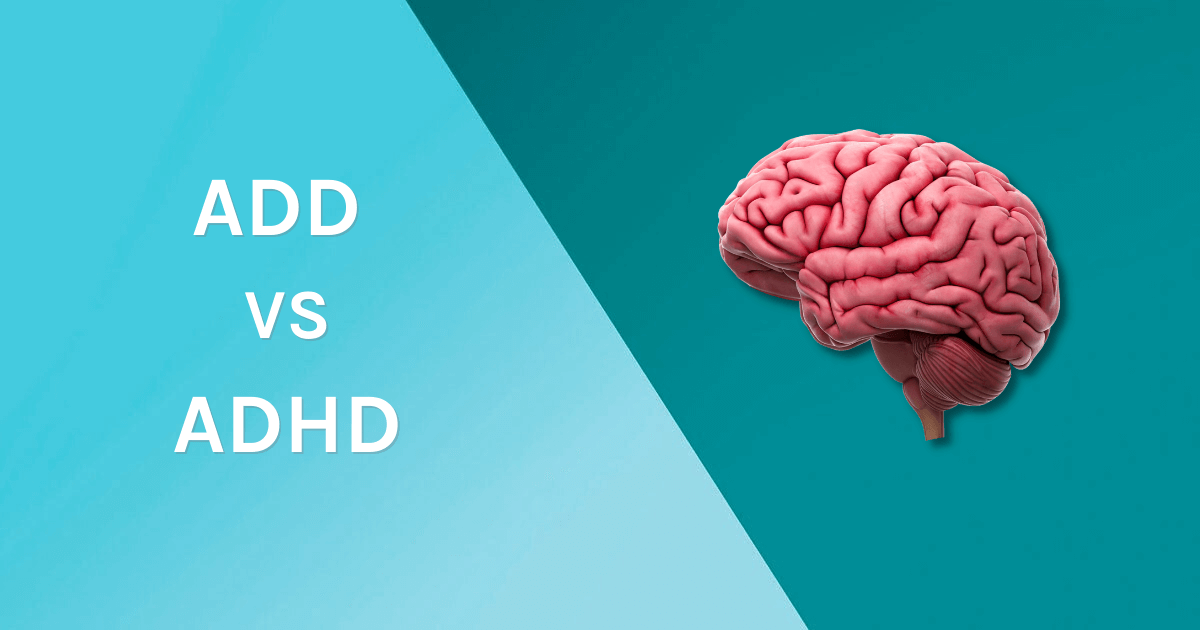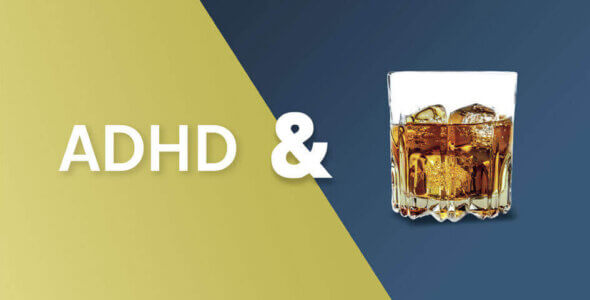ADD vs ADHD
Table of contents
Have you heard the term ADD used instead of ADHD and has it caused you confusion? That’s because ADD is an outdated term that is rarely used these days. The symptoms of the two conditions set them apart from one another, therefore it is important to define them separately. We cover the differences between the two terms, including their symptoms, diagnosis and treatment.
What is ADD?
ADD is the abbreviation for Attention Deficit Disorder. It was first used in 1980 to describe children that had a hard time paying attention and named the condition ADD in the Diagnostic and Statistical Manual of Mental Disorders. As time went on experts also noticed some of these children struggled with hyperactivity and impulsivity. At this point, all symptoms were combined into one group and renamed ADHD (Attention Deficit Hyperactivity Disorder) and the American Psychiatric Association (APA) stopped using the term ADD in 1987.
What is ADHD?
ADHD is the abbreviation of Attention Deficit Hyperactivity Disorder characterized by inattention, hyperactivity, and impulsivity. It is a neurodevelopmental disorder that is typically diagnosed in childhood, commonly in males but underdiagnosed in females. According to the Centers for Disease Control and Prevention, there are an estimated 6.4 million children and adolescents diagnosed with ADHD in the United States.
Mental health professionals have identified three types of ADHD, based on the main symptoms involved:
- Inattentive type ADHD
Previously known as ADD and now sometimes described as ADHD with inattentive presentation)
- Hyperactive-impulsive ADHD
- Combination of inattentive and hyperactive-impulsive type ADHD
ADHD symptoms can vary from person to person, depending on the subtype of ADHD.
Inattentive type
Symptoms of inattention:
- Disorganization
- Struggle to pay close attention to details, which may result in frequent mistakes
- Often does not follow through on instructions
- Appear to not listen
- Can get frustrated performing tasks or activities requiring mental effort
- Distractibility
- Misplace items
- Careless mistakes
- Forgetfulness
- Daydreaming
Hyperactive/impulsive type
Symptoms of hyperactivity:
- Behavior problems
- Impulsive behaviors
- Fidgeting with hands and feet or squirming
- Trouble staying seated
- Difficulty playing or doing leisure activities quietly
- Excessive talkativeness, including interrupting in conversation
- Difficulty waiting
- Interrupt or intrude on others
Combination-type ADHD
The combined type of ADHD shows a mixture of inattentive and hyperactive/impulsive type symptoms and behaviors.
Diagnosis of ADHD
Diagnosing ADHD requires an in-depth analysis of an individual’s symptoms of ADHD, their medical history, including any mental health conditions, and their academic, social, and emotional development.
Children need to have 6 or more symptoms (5 or more for adult ADHD diagnosis) for at least 6 months and
- Present with symptoms before the age of 12
- Present with symptoms in at least two different settings, including at school, home, work, with friends, or during other activities
- Present with symptoms severe enough to interfere with daily life at school, work, or in social situations and impact quality of life
This evaluation is completed by qualified clinicians who can then make an ADHD diagnosis based on criteria from the Diagnostic and Statistical Manual, 5th Edition (DSM-5), which is used by mental health professionals in the United States to diagnose all psychiatric conditions.
Treatment options
Treatments for ADHD may include medications such as:
- Short-acting stimulants such as Adderall, Focalin, Ritalin
- Intermediate and long-acting stimulants such as Focalin XR, Vyvanse, Mydayis, Concerta, Quillivant XR
These drugs reduce the symptoms of ADHD by working on the central nervous system. They increase activity in areas of the brain that help with concentration and behavior. They work specifically on the brain chemicals dopamine and norepinephrine. Dopamine in particular is involved in allowing you to feel pleasure, focus, and find things interesting.
- Counseling or behavioral therapy – behavior therapy includes behavior-changing strategies like setting and following routines. Counseling allows individuals to talk through their difficulties and find solutions
- Parental and educational support – parents, teachers, school counselors, and family members can learn behavior therapy to support the strategies suggested
- ADHD education
Some useful websites to start are CHADD https://chadd.org and American Academy of Child & Adolescent Psychiatry www.aacap.org
Medically reviewed
A medical professional has reviewed this article.


Jamie Winn, PharmD
Jamie Winn, PharmD
Dr. Jamie Winn received his Doctor of Pharmacy in 2002 from the University of South Carolina College of Pharmacy, Columbia, SC. Jamie is a medical reviewer for NiceRx.


